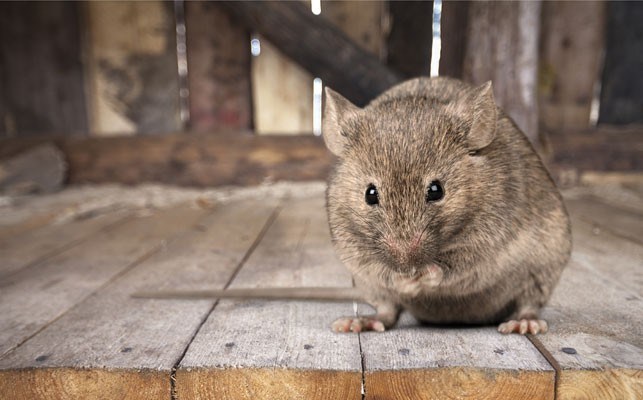Hideous giant spiders and scary skeletons, heads up! Or is that heads off? Time to roll over in your graves for you're being totally upstaged.
The scariest things around these days aren't spooky Halloween props from the local store. More and more, they're the latest facts about our world — facts at the heart of a genuine fright night any time of the year.
Here are just a few of the latest samplings to do with our precious food supply.
HOW DID SOMETHING SO GOOD GET SUCH A BAD RAP?
I don't know where you grew up and when, but in mid-century Alberta (that would be the middle of the last century, if anyone's counting) we never heard the end of how bad "bugs" were.
"Spray this on, kids — you'll get eaten alive!... Grab the Raid, Paul, there's a nasty one in the kitchen." Curses accompanied by all-out assaults against mosquitoes, black flies, regular flies, unwanted bees, aphids, cabbage moths and more were part of everyday life in the jack pine forests of northern Alberta. I can still picture the nasty pieces of brown flypaper dangling from farmhouse ceilings and studded with creepy-looking globs that once were insects.
Even "good" bugs, like lady bugs, met their doom. It was like we were at war with all insects in the house, in the garden, on every camping trip, and our very lives depended on their annihilation.
Well, the last laugh is on us.
Scientists in Germany who have been working with amateur entomologists since 1989, recently published their findings in the world's first multidisciplinary, open-access journal of scientific research, PLOS One. (Dear readers, take note: PLOS stands for Public Library of Science. In these dark days of doubt about facts and more, and I ain't talkin' about Halloween here, though I wish it were something as temporary and harmless, you might have noticed one of my personal strategies lately — to cite original sources and, in the process, give air time to good, reliable wellsprings of information, scientific and otherwise.)
Their conclusion: More than 75 per cent of the total flying-insect biomass in protected areas surveyed disappeared over 27 years. The decline in flying insects during the heyday of mid-summer hit a frightening 82 per cent!
Here's the rub: 80 per cent of wild plants depend on insects for pollination, while 60 per cent of birds rely on insects as a food source. A report in the U.S. put the value of work provided by wild insects doing things like pollinating food crops at US$57 billion.
The study was conducted on various habitats, including graasslands and nutrient-poor heaths, in 63 nature protection areas in Germany using Malaise traps — large tent-like structures that funnel the insects into a collecting vessel. (The traps are named for René Malaise, the Swedish entomologist, explorer and art collector who invented them in 1934.)
The decline is regardless of habitat type. More troubling is that "changes in weather, land use, and habitat characteristics cannot explain this overall decline," which will have to be taken into account from now on regarding wild species that depend on insects for food — birds, fish, mammals, you name it — as well as ecosystems and how they function in the European landscape.
But don't think we're off the hook in Canada.
For one, more than 700 bee species in North America, or about half of the total number of species on the continent, are already in decline, with many of the species threatened with extinction.
As well, one of the German scientists interviewed by CBC said that there's ample evidence of the same causal factors here — from climate change, to the overuse of pesticides and the decline of wild ecosystems flying insects depend on — to extrapolate that we're probably in the same kind of insect-death boat here.
THERE'S A RAID ON THE NORTH
We now know all that DEET and Raid stuff we've been killing insects with for decades is a really, really bad idea. Now we're now learning the pesticides we've replaced them with and other chemicals we use, like water repellants, are just as horrendous.
Biologists have known for years that polar bears and other arctic animals have in their bodies persistent organic pollutants (POP) that damage their immune systems, and more.
Many of those chemicals were finally restricted starting in 2001, and certain pollutants seemed to be dropping in levels. But now scientists are finding new, previously undiscovered POPs in the tissue of polar bears. Just what those amazing animals need as they wrestle with climate change and other stressors.
You and I don't eat polar bear meat. But many Inuit do, and POPs accumulate in the creatures at the top of the food chain.
THE RATS GET THE LAST WORD
Got a fat, rubber rat on your doorstep to scare the kids this Halloween? Here are a couple of rat facts, and they're fast: A third of the food supply on Earth is eaten or destroyed by rats each year. If that ain't scary enough for you, in North America we now have more rats infected with bubonic plague than lived in Europe during the Black Death.
Happy Halloween! Do something green, besides painting your face like a Martian, and maybe try to suss out some organic, good-for-everyone treats for your neighbourhood goblins...
Glenda Bartosh is an award-winning journalist who is constantly haunted by what we're doing to our world.




